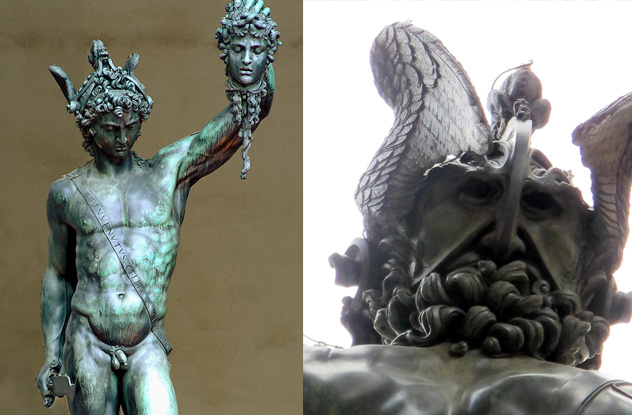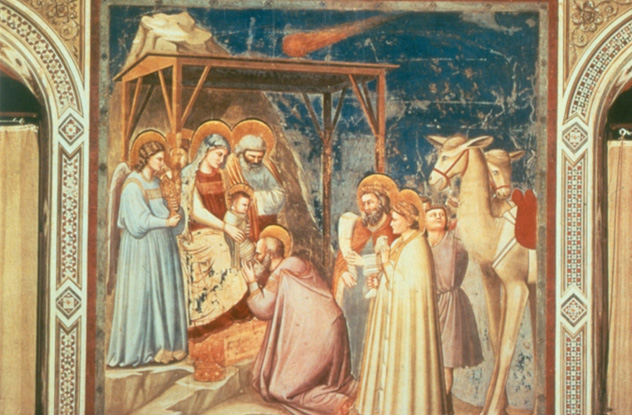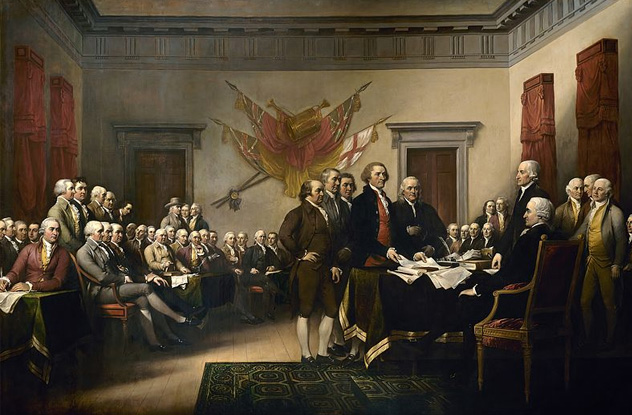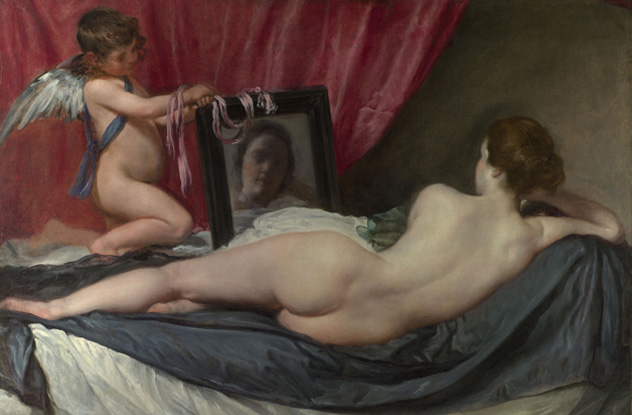Is It Possible That The Garden Of Eden Is Located In Israel
Art is unique because it speaks to each individual on a personal level. Whatever a work of art might mean to you, it won't necessarily mean the same thing to the person standing behind you, and both could be completely different than the meaning intended by the artist. That being said, art also has plenty of stories to tell. These stories are accrued over decades, even centuries, and are there for those willing to look closely enough.
10 Arnolfini Portrait

The Arnolfini Portrait, painted in 1434 by Dutch artist Jan van Eyck, is regarded by art historians as one of the most important paintings in history but also a constant source of controversy. For starters, the painting is done in oil—something conventional nowadays but pretty rare in Western European art of the early 15th century.
This allowed Van Eyck to fully explore his talent for detail in ways that have seldom been seen in other paintings. If you look closely, you can see that the mirror on the back wall reflects the entire room, including two additional figures standing in the doorway. (The dog is conspicuously absent.) The artist even (somewhat) takes into account the distortion of the convex mirror. Incredibly, the even smaller medallions inside the frame of the mirror depict scenes from the Passion of Christ.
However, the controversial part of the painting isn't the mirror but rather the couple itself. It was unusual for that time to paint contemporary people just standing around the house, so historians have argued that there might be a deeper meaning to the painting. Specifically, some have argued that the artwork depicts a newly married bride and groom with the mysterious figures in the doorway acting as witnesses. Not everyone agrees with this assertion, and experts have analyzed every minute detail in the painting from the way the couple is holding hands to how the woman is wearing her hair to try and establish the relationship between the two people.
9 Manneken Pis

If you're ever in Brussels, make sure to say hi to one of Belgium's most notable landmarks, Manneken Pis ("Little man Pee"). As the name suggests, it is a little boy peeing into a fountain, and records show that he has been around since 1388. Back then, he was a stone statue serving as a public fountain, but that statue was either destroyed or stolen at some point. The Manneken Pis we know today was designed and installed by Flemish sculptor Jerome Duquesnoy in 1619.
There are quite a few legends surrounding the origins of the sculpture. The most famous one tells of a little boy who saved Brussels when it was under siege. He did this by peeing on the fuse when the enemy was trying to blow up the city walls. Another legend says that the statue is actually of Duke Godfrey III of Leuven when he was two years old. According to the story, during a battle, his troops placed him in a basket and hung it up a tree. From there, he peed on the enemy, who eventually lost the fight.
Nowadays, the statue is one of the city's main tourist attractions, and you will often see Manneken Pis sporting a little costume. That's because it has been a tradition ever since the 18th century to dress him up in fancy clothes. He receives new clothes all the time, and his wardrobe currently holds over 900 suits.
8 The Garden Of Earthly Delights

The Garden of Earthly Delights is one of the most complex, ambitious paintings you are likely to ever see. Technically, it's a triptych (three separate panels) painted by Netherlandish master Hieronymus Bosch sometime between 1490 and 1510. The left panel depicts Adam and Eve in the Garden of Eden. The middle panel shows a rich panorama loaded with characters, both human and animal, engaged in various activities. The right panel shows a darker, hellish world.
At first glance, Bosch is clearly depicting heaven, Earth, and hell, possibly even as a warning against all of life's temptations. That's usually the general consensus among art historians, but his artwork is so filled with intricate and abstract imagery that we are still discovering new things about the painting 600 years later. For example, music plays a large role in the triptych, and numerous characters are depicted playing musical instruments in unconventional ways (like as flutes inserted between the buttocks). Musicologists at Oxford have recreated the instruments and tried to play them, only to discover that they sound horrible.
There's more to Bosch's butt music, though, as only recently have we discovered that a character in the hell panel has sheet music printed on his rear end. Of course, it was only a matter of time before we transcribed and recorded the "600-year-old butt song from hell."
7The Bayeux Tapestry

The Bayeux tapestry is one of the most important artifacts to survive the Middle Ages. It is a 70-meter-long (230 ft) cloth embroidered with 50 scenes depicting the fighting between William the Conqueror and King Harold during the Norman invasion. Despite being over 900 years old, the tapestry is still in remarkable condition, although it is conspicuously missing its final section.
If you want to be pedantic, the Bayeux tapestry is not, technically, a tapestry. It is an embroidery, which, although similar, uses a different technique. Threads are stitched into a base fabric to form images instead of weaving the whole thing on a loom.
The old story that the tapestry was done by nuns all over England and then stitched together is also looking unlikely. Modern experts opine that, while the characters look different from each other in many scenes, the embroidery techniques remain consistent. This has led them to conclude that the tapestry was likely done by a team of skilled seamsters.
The biggest mystery surrounding the tapestry remains its origins. William's brother, Bishop Odo, has been regarded as the likeliest candidate to commission the tapestry for a long time. However, a recent theory says it might have been Edith Godwinson, the defeated Harold's sister, to gain favor with the new king. One historian named a monk called Scolland as one of the designers because the seamster identified himself as a witness in one of the tapestry's scenes.
6 Perseus With The Head Of Medusa

Travel to the Piazza della Signoria in Florence, and you will be treated to an astonishing exhibition of Renaissance art. That's because the square has a sizable collection of priceless statues including Hercules and Cacus by Bandinelli, The Rape of the Sabine Women by Giambologna and the Medici lions. However, the statue that garners the most attention is, without a doubt, Cellini's masterpiece, Perseus with the Head of Medusa.
The name of the artwork is pretty self-explanatory. Cellini depicts a triumphant Perseus lifting Medusa's head in the air, her lifeless body by his feet. The story is a popular one in Greek mythology that still resonates with the public to this day. The statue was commissioned by Cosimo I de Medici when he became grand duke and was unveiled to the public in 1554. Back then, Perseus shared the piazza with the aforementioned Hercules statue, Michelangelo's David, and Donatello's Judith and Holofernes. However, while Michelangelo and Donatello's statues were taken to museums and copies put in place, the original Perseus stayed in the square for almost 500 years, only being covered briefly for restorations.
Cellini found an odd way to sign his work (besides putting his name on Perseus's sash). If you look at Perseus's head from the back, you can see that his helmet and his hair form a face and a beard. Although not a perfect likeness, many agree that Cellini sculpted himself in the back of his hero's head.
5Lenin Bust

A bust of Lenin is not that amazing. There have been loads of them erected all over the world in the past century. It is the placement that makes this bust special—it is in Antarctica. Specifically, it is at the pole of inaccessibility, the most remote location in the South Pole.
Back during the Cold War, the Americans constructed a research station at the South Pole. Keen to show them up, the Soviets also built one in 1958. Just to make it more special, they built it in the most difficult-to-reach spot they could find. It was done purely as a game of one-upmanship. The Soviets only stayed there for a few weeks and then popped a bust of Lenin on the chimney on their way out.
Over the next decade, several new expeditions made their way to the research station, the last one in 1967. Afterward, the station and the bust were forgotten about for 40 years. In 2007, a Canadian-British team of Antarctic explorers wanted to set the record of being the first people to reach the pole of inaccessibility on foot. After a 49-day trek, they reached their destination, where they were greeted by the only thing left standing—the bust of Lenin. Everything else was now covered in snow.
4 Adoration Of The Magi

The Adoration of the Magi is the name typically given to the famous biblical scene where the three magi follow a star and bring gifts to the baby Jesus. The scene has been featured in art a lot, and many greats have painted their own version, including Botticelli, Rembrandt, Leonardo, and Rubens. The one we're interested in is Giotto, a 13th-century Italian artist whose own version of The Adoration of the Magi is considered among his greatest masterpieces. Of particular note is the Star of Bethlehem, which some have concluded Giotto modeled after Halley's Comet.
The timing lines up pretty well. Giotto finished the painting in 1305 and started it sometime in 1303. Halley's Comet passed by Earth in 1301, so it is quite possible that Giotto could have seen it and been inspired by it. Even so, that still wouldn't make it the first representation of the comet, as the aforementioned Bayeux Tapestry also shows the 1066 passing of the comet just a few months before the Norman Conquest. It would appear that the people at the European Space Agency are so convinced of the painting's scientific credentials that they named their mission to Halley's Comet "Giotto" in honor of the artist.
3 Declaration Of Independence

Declaration of Independence by John Trumbull is one of the most iconic paintings in US history. Commissioned in 1817, the painting has been sitting in the US Capitol building for almost 200 years, and it's even depicted on the $2 bill.
Because of the name and the importance of the painting, many people incorrectly assume that the artwork depicts the signing of the Declaration of Independence. In reality, it shows the five-man drafting committee led by Thomas Jefferson (and including Ben Franklin, John Adams, Roger Sherman, and Robert Livingston) presenting the first draft of the declaration to the President of the Continental Congress, John Hancock.
The painting shows 42 of the 56 people who would eventually go on to sign the declaration. Trumbull wanted to include all 56, but he couldn't find authoritative likenesses for the other 14. Other architectural features of Independence Hall where the event took place were inaccurate because they were based on a sketch Thomas Jefferson did from memory.
In the painting, it would appear at first glance that Thomas Jefferson is stepping on John Adams's foot, and some speculated this was meant to represent the political tension between the two. However, closer examination reveals that their feet are side-by-side. Just to be sure, the image on the $2 bill was modified to create more space between their feet.
2 Rokeby Venus

Diego Velasquez was one of the leading artists of the Spanish Golden Age, and the Rokeby Venus is considered to be one of his best works, as well as his most controversial. The subject matter is licentious—a naked Venus is seated with her back to the observer, while looking at you through a mirror.
As far as the eroticism goes, far more explicit stuff had been depicted in art up until that point. However, Velasquez finished the painting in 1651, at a time when the Spanish Inquisition had a lot to say in regards to what was allowed and what wasn't, and nudity in art was on the "naughty" list. It was common for artists to be fined or excommunicated and their artwork seized. Only because Velasquez was under the patronage of the king of Spain, Philip IV, could he get away with it, and this is still his only surviving female nude.
It was housed in Rokeby Park in England for almost a century. Since 1906, the painting has been located at the National Gallery in London. It made headlines again in 1914, when the painting became the victim of a vicious attack. The perpetrator was suffragette Mary Richardson, who wanted to destroy something valuable to protest the arrest of Emmeline Pankhurst. She attacked the painting with an axe, causing seven long slashes, but the canvas was eventually fully restored.
1 David

Michelangelo's David is probably the most famous statue in the world. However, not many people get to stare David in the face. That's for two reasons. One, the statue is over 5 meters (17 ft) tall, and two, it is placed facing a column in the Galleria dell'Accademia in Florence and has been that way since 1873.
From the side, like everyone sees him, David looks imposing and confident. Up close, however, his look betrays nervousness, aggression, and even fear. Michelangelo would not have given him this expression randomly, which is why people now conclude that David is depicted getting ready to fight Goliath. This is backed up by others' claim that David is holding a weapon in his right hand, most likely a fustibal.
Two Florentine doctors examined David and remained astounded at the level of detail put into the statue. The tension in his right leg, the tightening of the muscles between his eyebrows, and the flaring of the nostrils are all present and are all consistent with David getting ready to sling a stone at an enemy.
This conclusion also puts to rests an often-noticed, rarely discussed aspect of the statue—David's less than-impressive endowment. David's pisello is a running joke with Italians, but most people who see the statue wonder why Michelangelo bestowed upon him such modest dimensions, given that he made David look so imposing in all other regards. But anatomically, the shriveled appendage is perfectly consistent with someone about to fight to the death.
Radu is a history/science buff with an interest in all things bizarre and obscure. Share the knowledge on Twitter or check out his website.
Is It Possible That The Garden Of Eden Is Located In Israel
Source: https://listverse.com/2015/07/27/10-great-stories-behind-famous-works-of-art/
Posted by: mercerciat1967.blogspot.com

0 Response to "Is It Possible That The Garden Of Eden Is Located In Israel"
Post a Comment